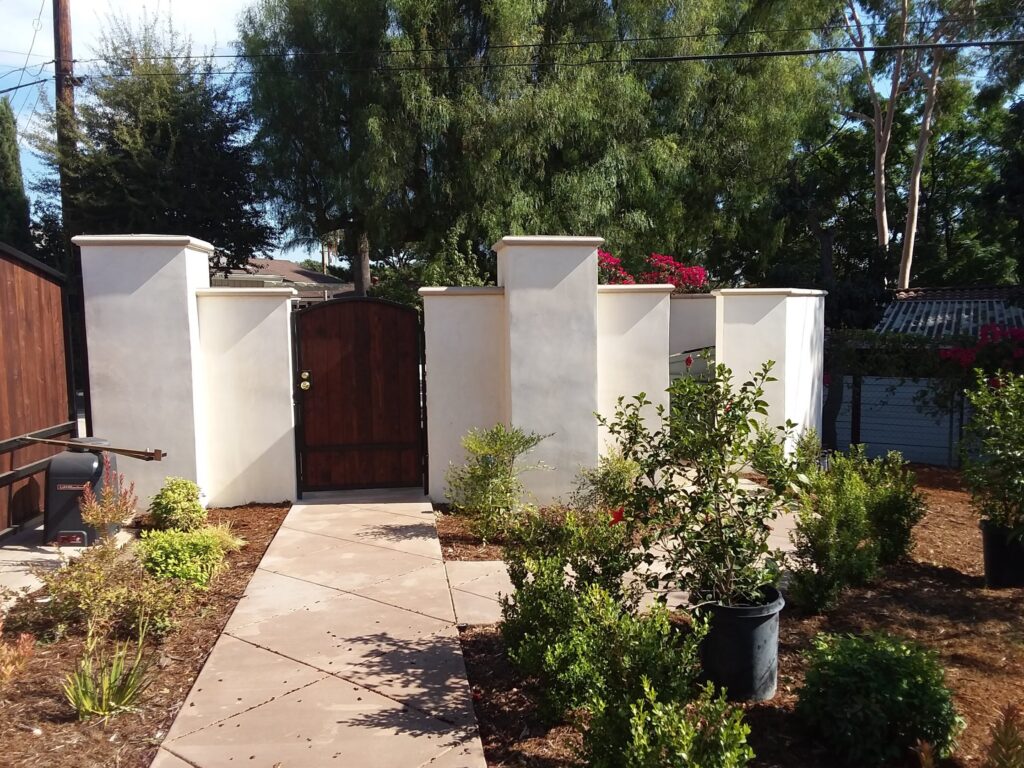A well-designed concrete walkway is more than just a functional path—it’s an opportunity to enhance curb appeal, accessibility, and durability in both residential and commercial spaces. Whether leading to a front entrance, winding through a garden, or connecting outdoor living areas, concrete walkways offer a versatile and long-lasting solution.
But not all walkways are created equal. From stamped and brushed concrete to exposed aggregate and paver-style options, each type provides a distinct aesthetic, cost range, and maintenance requirement. Understanding the differences ensures you choose the best option for your landscape needs.
This guide explores popular concrete walkway designs, installation costs, and key benefits, helping you make an informed decision for a stylish and durable outdoor path.
Concrete Walkway Styles & Costs
Different concrete walkway styles offer unique textures, finishes, and visual appeal. Here’s a breakdown of the most popular types, their best applications, and estimated costs:
1. Stamped Concrete Walkway (Best for Decorative Paths)
- Estimated Cost: $9 – $13 per sq. ft.
- Overview: Stamped concrete mimics the look of brick, stone, wood, or tile, offering a customized and high-end appearance at a fraction of the cost. This finish is achieved by pressing patterns into wet concrete before it sets.
- Advantages:
- Wide range of textures and colors available
- More affordable than natural stone or pavers
- Durable with proper sealing
- Disadvantages:
- Can be slippery when wet
- Requires resealing every 2-3 years
- Prone to minor surface cracks over time
2. Exposed Aggregate Walkway (Best for Natural, Textured Appeal)
- Estimated Cost: $10 – $15 per sq. ft.
- Overview: This finish exposes small pebbles, stones, or aggregates within the concrete, creating a unique natural appearance and textured surface. It’s ideal for garden paths and outdoor landscapes.
- Advantages:
- Slip-resistant and durable
- Elegant and visually interesting finish
- Low maintenance and long-lasting
- Disadvantages:
- More costly than standard concrete
- Can feel rough underfoot
- Requires occasional sealing to prevent erosion
3. Brushed Concrete Walkway (Best for Slip-Resistance)
- Estimated Cost: $8 – $12 per sq. ft.
- Overview: A broom-finished surface provides a subtle texture, increasing traction and durability. Brushed concrete is a classic, budget-friendly option for high-traffic areas.
- Advantages:
- Affordable and quick to install
- Excellent for wet areas due to slip resistance
- Minimal maintenance required
- Disadvantages:
- Less visually appealing than decorative options
- Surface can wear down over time
- Not as customizable as stamped or exposed aggregate
4. Paver-Style Concrete Walkway (Best for a Customizable Look)
- Estimated Cost: $12 – $18 per sq. ft.
- Overview: This method involves pouring concrete into pre-formed molds or creating a paver-like effect with stamped patterns. It offers the visual appeal of pavers with the durability of concrete.
- Advantages:
- Highly customizable in terms of color and texture
- Provides aesthetic appeal similar to traditional pavers
- Less likely to shift compared to brick or stone pavers
- Disadvantages:
- More expensive than basic concrete walkways
- Can require joint sealing over time
- Installation process is more labor-intensive
Comparison Table: Concrete Walkway Styles
| Walkway Type | Best For | Estimated Cost Range (per sq ft) |
| Stamped Concrete | Decorative paths | $9 – $13 |
| Exposed Aggregate | Natural, textured look | $10 – $15 |
| Brushed Concrete | Slip-resistant surfaces | $8 – $12 |
| Paver-Style Concrete | Customizable, elegant paths | $12 – $18 |
These ranges include installation for a typical 4″ to 6″ concrete slab with reinforcement.
Benefits of Concrete Walkways
1. Long-Lasting Durability
Concrete walkways can withstand heavy foot traffic, extreme weather, and ground movement, making them a smart long-term investment.
2. Versatile Design Options
With stamping, staining, and texturing techniques, concrete walkways can be designed to complement any outdoor aesthetic, from modern to rustic.
3. Low Maintenance
Unlike wood, which requires sealing and staining, or pavers that may shift over time, concrete walkways are easy to maintain with occasional cleaning and resealing.
4. Enhanced Safety
Slip-resistant finishes, such as brushed or exposed aggregate, provide superior traction, reducing the risk of slips and falls.
5. Cost-Effective Alternative
Compared to natural stone or brick pavers, concrete offers a budget-friendly yet stylish solution for outdoor pathways.
FAQs
How much does it cost to cement a path?
A basic poured concrete walkway typically costs between $8 – $12 per square foot, while decorative finishes like stamped or exposed aggregate range from $10 – $18 per square foot, depending on design complexity and location.
Is stamped concrete worth the money?
Yes! Stamped concrete walkways provide the elegance of high-end materials like brick or stone at a fraction of the cost. They are also durable and customizable, making them a great investment for enhancing curb appeal.
How much does it cost to build a covered walkway?
A covered concrete walkway involves two cost components:
- Concrete pathway installation: $8 – $18 per sq. ft.
- Overhead covering (e.g., pergola, awning): $20 – $50 per sq. ft.
The total price varies based on materials, labor, and structure complexity.
How thick should stamped concrete be for a walkway?
Stamped concrete walkways should be at least 4 inches thick, with rebar or wire mesh reinforcement to prevent cracking and ensure longevity.
Is 2 inches of concrete enough for a walkway?
No. A 2-inch-thick slab is too thin and will crack under foot traffic. Walkways should be at least 4 inches thick for structural integrity, with thicker sections recommended for high-traffic areas.
Concrete walkways provide a perfect blend of durability, style, and affordability. Whether you prefer the sophisticated look of stamped concrete, the natural charm of exposed aggregate, or the practicality of brushed finishes, there’s a walkway style to match every landscape and budget.
By choosing the right design and understanding the costs and maintenance requirements, you can create an inviting and long-lasting outdoor path that enhances your home’s curb appeal and usability for years to come.

